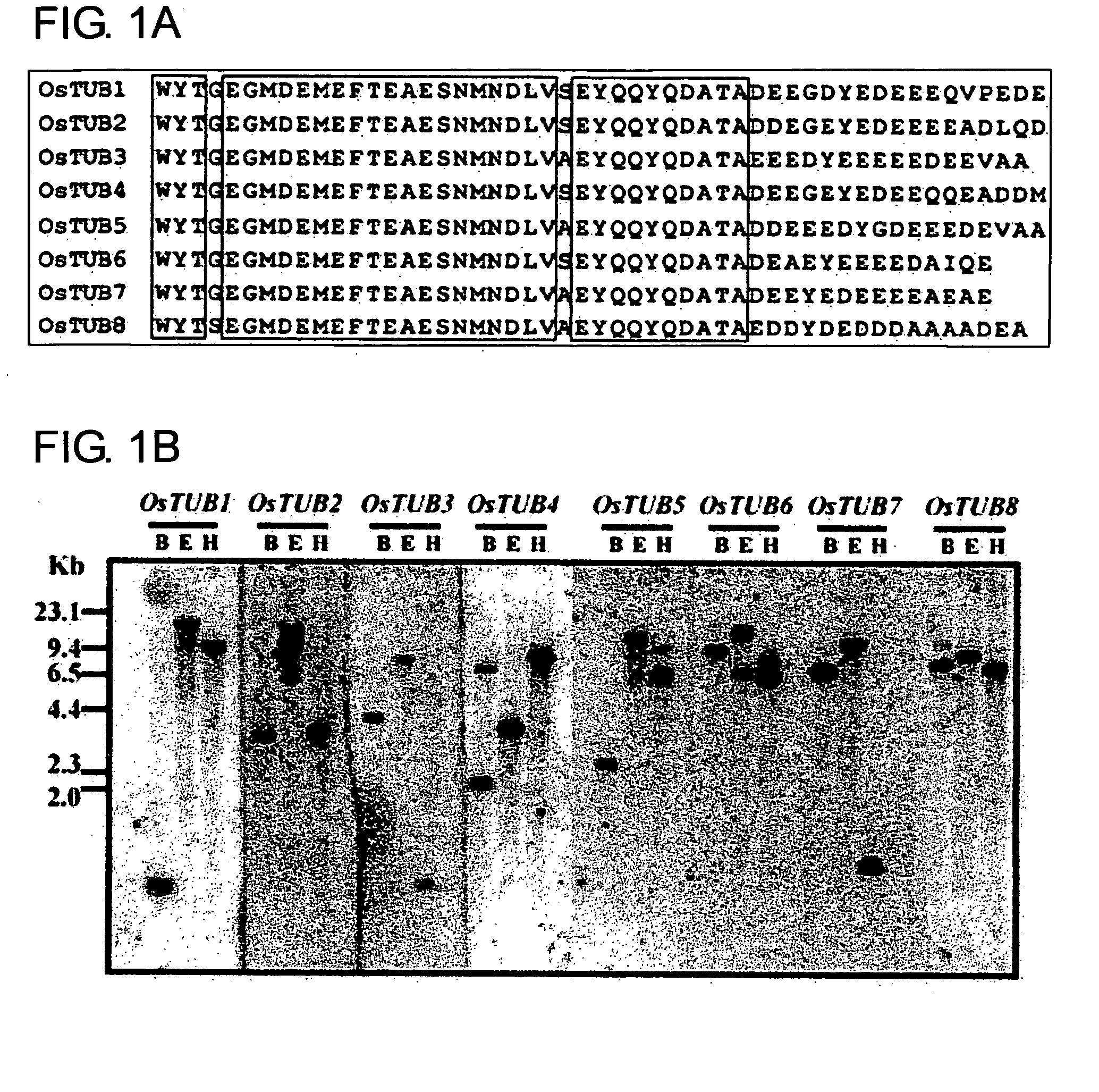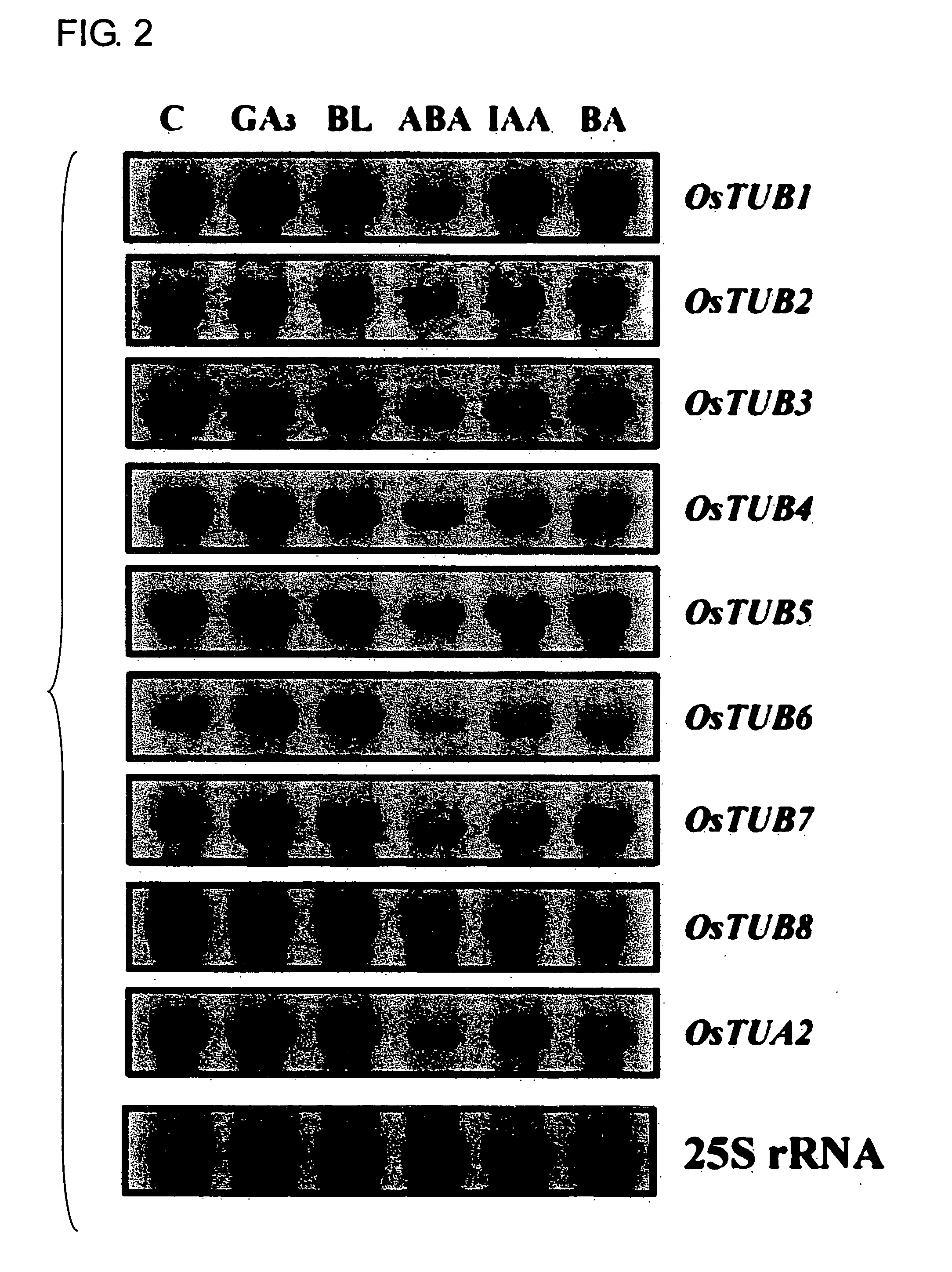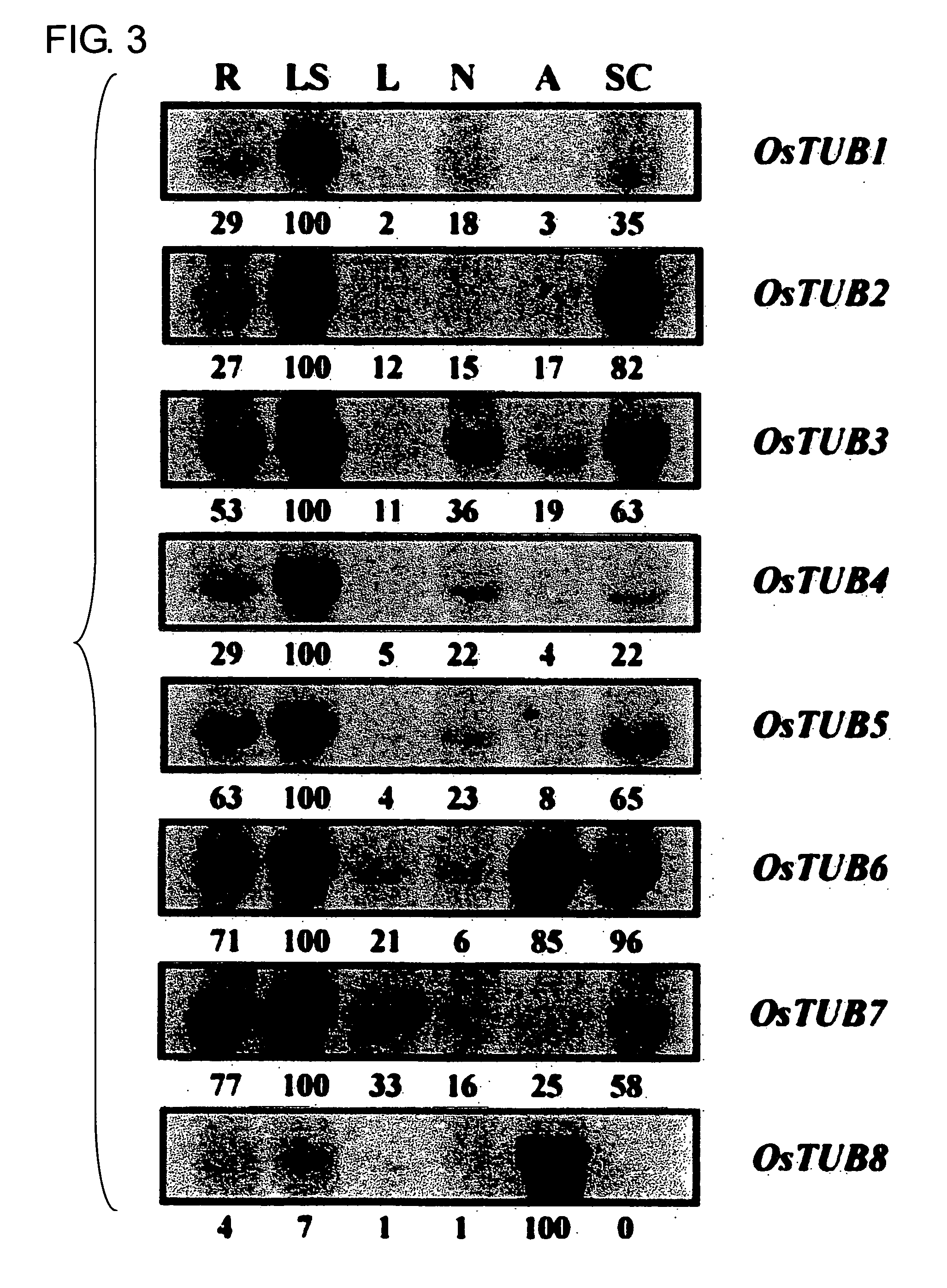Anther-specific genes, their promoters, and uses of the same
a technology of antigens and promoters, applied in the field of antigens, can solve the problem of suppressing the commercialization of these food products
- Summary
- Abstract
- Description
- Claims
- Application Information
AI Technical Summary
Benefits of technology
Problems solved by technology
Method used
Image
Examples
example 1
Exhaustive Analysis of Genes and Proteins That Respond to Gibberellin
[0074] Microarray analysis was carried out to screen for genes that correspond to gibberellin. A cDNA microarray comprising 8987 EST clones was used. mRNAs were prepared by treating the leaf sheaths of rice seedling with 10 μM GA3 for 24 hours. Using 1 μg of these mRNAs, a reverse transcription reaction was carried out in the presence of 50 μM Cy5 dCTP (Amersham Pharmacia Biotech). After reacting for two hours at 42° C., the reaction was stopped. After heat-treating for three minutes at 94° C., the RNA was degraded by 15 minuets of NaOH treatment at 37° C., and cDNAs were recovered. Fluorescence-tagged cDNA probes were purified using a QIA quick PCR purification kit (QIAGEN). The methods of Yazaki, J. et al. were used for probe hybridization and microarray slide scanning (Yazaki, J., et al., 2000, DNA Research 7: 367-370). Data was analyzed by Array Vision (Imaging Research).
[0075] Proteome analysis was further c...
example 2
Analysis of Hormone Specificity in Rice Leaf Sheaths
[0077] About 0.5 g of tissue samples rapid frozen in liquid nitrogen was ground to a powder using a mortar and a pastle, and total RNA was prepared by the methods of Chomczynski and Sacchi (Chomczynski, P. and Sacchi, N., 1987, Anal. Biochem., 162: 156-159). For Northern blotting, 20 μg of total RNA was electrophoresed on a 1.2% agarose gel comprising 6% formaldehyde, and then transferred to a Hybond™-N+ nylon membrane (Amersham Pharmacia Biotech). The amounts of rRNA stained with ethidium bromide were compared with each other to ensure that equal amounts of RNA was electrophoresed in Northern blotting. Hybridization was carried out at 42° C. overnight using ULTRAhyb™ (Ambion), followed by washing with 2×SSC and 0.1% SDS at 42° C. for five minutes, and then with 0.1×SSC and 0.1% SDS at 68° C. for 15 minutes. The expression amount was analyzed using image analysis apparatus (Amersham Pharmacia Biotech).
[0078] These results indicat...
example 3
Analysis of the Tissue-Specificity of Tubulin
[0079] Using the above probes, Northern blotting was carried out to confirm the expression level of mRNAs in each rice tissue (FIG. 3), for analysis of the tissue-specificity of the eight types of tubulins. There was hardly any expression in the leaf blades for each of the eight types. OsTUB1, OsTUB3, OsTUB4, OsTUB5, and OsTUB7 were specifically expressed in rice leaf sheaths. OsTUB2 was expressed in leaf sheaths and calli, and OsTUB6 was expressed in leaf sheaths, calli, and anthers. OsTUB8 expression in the anther was 15 times more prominent than in leaf sheaths.
PUM
| Property | Measurement | Unit |
|---|---|---|
| humidity | aaaaa | aaaaa |
| acid | aaaaa | aaaaa |
| Northern blotting | aaaaa | aaaaa |
Abstract
Description
Claims
Application Information
 Login to View More
Login to View More - R&D
- Intellectual Property
- Life Sciences
- Materials
- Tech Scout
- Unparalleled Data Quality
- Higher Quality Content
- 60% Fewer Hallucinations
Browse by: Latest US Patents, China's latest patents, Technical Efficacy Thesaurus, Application Domain, Technology Topic, Popular Technical Reports.
© 2025 PatSnap. All rights reserved.Legal|Privacy policy|Modern Slavery Act Transparency Statement|Sitemap|About US| Contact US: help@patsnap.com



